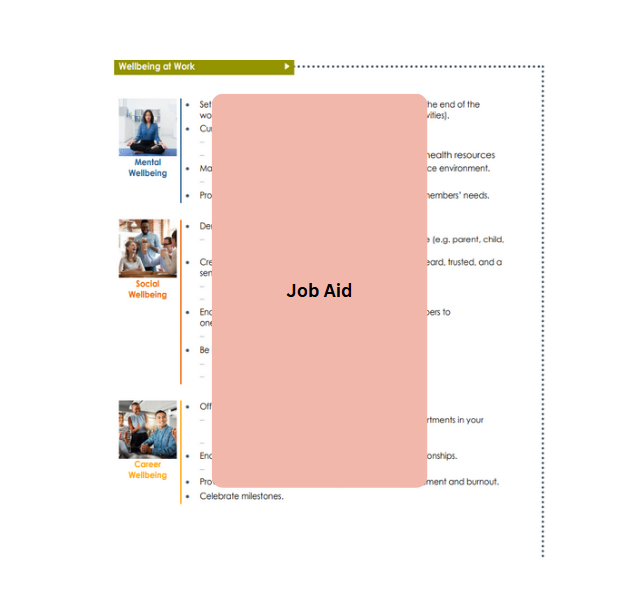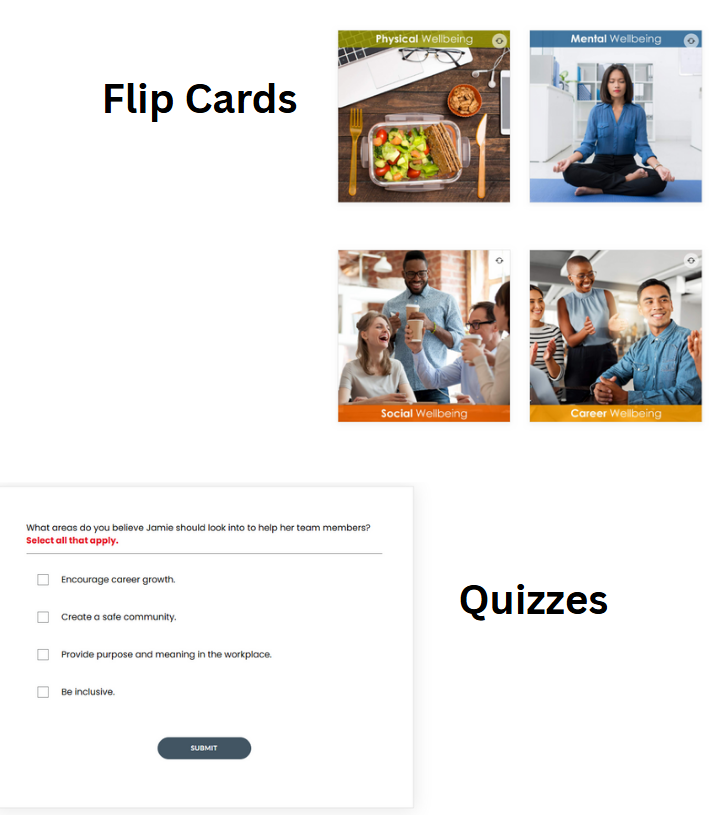Wellbeing At Work
When leaders prioritize well-being, they foster trust, reduce burnout, and build a culture where individuals feel safe, valued, and motivated.
Learn how you can support your teams wellbeing.
Problem
Burnout is a growing concern in today’s fast-paced work environments, and managers are not always equipped to respond effectively. When a team member like Matt begins to show signs of burnout, managers may struggle to initiate meaningful conversations, or create a psychologically safe space for recovery. The result? Trust erodes, performance declines, and retention risks increase.
Without the right tools and mindset, even well-intentioned leaders can miss the opportunity to support their teams in a way that fosters resilience and trust.
Solution
This course was designed to empower managers—specifically, the learner in the role of Matt’s manager—with the skills and awareness needed to navigate burnout conversations with empathy and effectiveness. Through scenario-based learning, the course guides the learner in:
Initiating trust-building conversations that prioritize psychological safety
Responding with empathy and support rather than judgment or avoidance
Creating a sustainable action plan that supports Matt’s well-being and re-engagement
By placing the learner in a realistic leadership scenario, the course bridges the gap between theory and practice. It encourages reflection, emotional intelligence, and the development of interpersonal skills that are essential for modern leadership.
Tools Used
-
I chose Articulate Rise to develop my e-learning module because it strikes a perfect balance between clean design, ease of use, and learner engagement.
-
Using Word, I was able to create a storyboard that outlined the functionality and scenario for the eLearning course.
-
Using Xyleme, I was able to create a Job Aid that could be used as a take away of the course.
Respecting Confidentiality
As part of my commitment to honoring client trust and proprietary content, I’m unable to share the full course I developed for Development Dimensions International (DDI). The materials are protected under confidentiality agreements and internal use policies.
What I Can Show You
While the full course remains private, here’s a glimpse into the instructional design elements I crafted:
Interactivity
To support active learning and knowledge retention, I integrated interactive elements throughout the course.
Quizzes provided immediate feedback and reinforced key concepts through retrieval practice.
Flip cards encouraged self-paced review and spaced repetition, helping learners solidify understanding.
Image interaction allowed learners to explore visual content dynamically, promoting curiosity and deeper engagement.
By giving learners control and opportunities to apply knowledge, I helped foster intrinsic motivation and autonomy.
Job Aid
I designed job aids as performance support tools that learners could reference beyond the course.
These resources bridge the gap between learning and doing, supporting situated cognition and transfer of learning.
They also reflect andragogical principles by respecting learners’ need for practical, problem-centered content. Whether it was a checklist, workflow diagram, or quick-reference guide, each aid was crafted to empower learners in their roles.
Storytelling
Storytelling was used to humanize the content and anchor abstract concepts in relatable scenarios.
Through narrative, learners could see themselves in the material, which supports constructivist learning and emotional engagement.
Stories also helped illustrate consequences, choices, and outcomes—making the learning more memorable and meaningful. This approach resonates with adult learners’ preference for experiential learning and relevance to real-life challenges.
Let’s Connect
If you're interested in seeing more examples of how I apply learning theory to design, feel free to reach out. I’d love to share additional projects and insights from my work as a Learning Experience Designer.
www.linkedin.com/in/marilu-oliva/
marilu.fabiola5215@gmail.com





